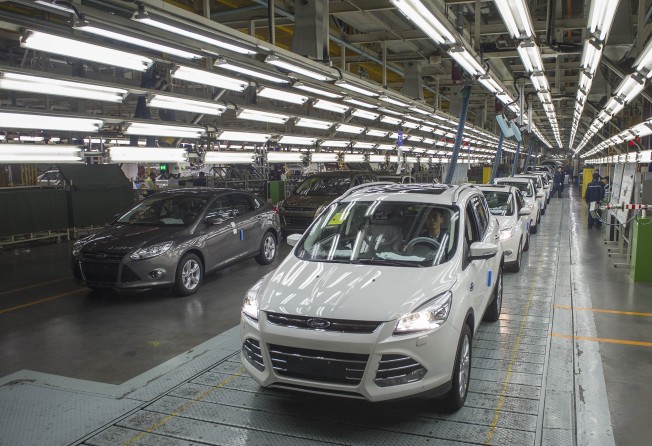Post-divorce, Chang'an Ford has lost weight and is looking good
Despite a late entry to the market, Ford's China investment holds important lessons for multinationals

Just one year after its split from Mazda, Ford’s recent performance in China is starting to turn heads.
In December 2012, the Chinese government approved the split up of the three-way joint venture between Ford, Mazda and Chang’an Automobile. This resulted in the newly created Chang’an Ford joint venture which went on to sell an impressive 935,000 cars in China in 2013. That was a 49% increase year-over-year. And is up from only around 400,000 as recently as 2010.
Post-divorce Chang’an Ford is looking good – and is turning into a China business story with some important lessons for multinationals.
Lesson #1: You don’t need to get to China early to win.
While Ford established its initial joint venture with Chang’an Automotive Group in 2001, operations didn’t begin until 2003 and they only really started producing cars in significant numbers in 2005 (61,000 sold in 2005).
This is in comparison to General Motors which established its joint venture with SAIC in Shanghai in 1997. And was long after VW launched its China joint venture in 1984. By most measures, Ford came to China about a decade late.
But Chang’an Ford has found its mojo. The company has been steadily gaining ground and closing in on GM and Volkswagen. The market leaders are still way ahead but the gap has narrowed significantly.
The lesson here is that it is never too late go after the China market.
Lesson #2: You don’t need to start off in first tier cities.
Ford did not partner with a major automotive group in the coastal first tier cities. It did not go to Beijing, Shanghai or Shenzhen / Guangzhou. It went to Chongqing, far inland and away from the large markets of Shanghai and Beijing.
While we have not seen Ford’s sales breakdown by region, it would not be surprising to see the company doing particularly well in the inland markets. Going deeper inland and perhaps avoiding the more intense and entrenched competition in the coastal cities is a good strategy.
The other factor here is that an inland headquarters has the advantage of lower labor costs. Manufacturers in particular are increasingly moving inland to avoid rising labour costs on the coast.
Lesson #3: Market share can shift fairly quickly in China
General Motors’ auto sales increased to about 3.5 million in China in 2013. That is up from 3.16 million prior. Volkswagen is in the same sales range and both companies are growing around 10% annually. So there is some market stability at the front of the pack.
However, market share in the middle is shifting quickly. In the past year, Ford has surpassed Toyota and its two joint-venture partners which sold 917,500 cars (a 9% increase). Ford also passed Honda’s China volume at 756,000 cars (a 26% increase). Ford is moving steadily up the outside lane.
Lesson #4: It’s mostly about getting to local scale
Ford is investing in China in a big way. With $4.9 billion in investment set for China, Ford and its joint venture partners are building four assembly plants and three powertrain plants. It has also announced plans to double its network of 400 dealers and is launching 15 vehicles in the next several years.
The lesson here is that local operational scale is the critical capability. And all indications are that Ford is continuing to aggressively build scale on the ground in China.
Overall, this is turning into a fascinating story with important lessons for multinationals. While some industries do offer structural competitive advantages, most, including automotive, depend on building operational depth and efficiencies over the long-term. It is a fight to build scale in design, manufacturing, marketing, dealer networks and after-sales service.
And in the rapidly changing China market, such scale can show results fairly quickly.
For more on this subject, please take a look at our “speed-read” China book (called The One Hour China Book, www.onehourchina.com). Available now on Amazon for the price of a medium latte.